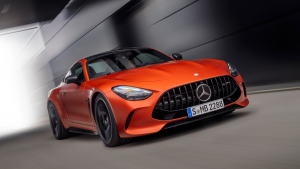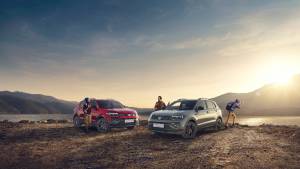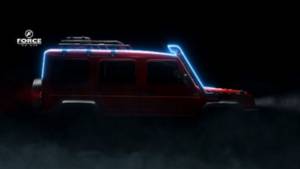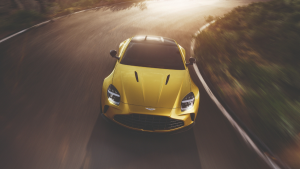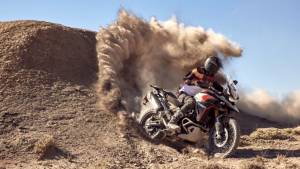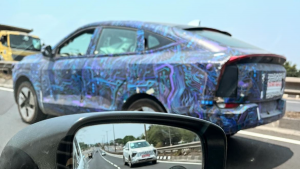Hertz Travelogue - A driving holiday to Australia
"I hope you come back for another trip, mate." That was the immigration officer stamping my passport at Melbourne airport on my way out of the sixth largest country, nay continent, on the planet. He was inquisitive about my week long trip in Australia, and with no one behind me in the queue, he clearly wasn't in a tearing rush to have me moving on. He was hooked when I mentioned that I was driving around South Australia for the past week and was delighted on knowing that I was a journalist who was writing a travelogue on Australia. After one of the best weeks in my life, I simply smiled and replied "I hope so too."
The past week had seen me walk along the bustling streets of Melbourne and get a taste of its vibrant lifestyle, pamper my senses with the natural beauty of South Australia as I drove along the world famous Great Ocean Road, learn about the country's aboriginal history and enjoy moments of absolute tranquility with nothing but just the sound of the Pacific Ocean's waves. Memories that I will cherish until I head back again.
The Australian island continent has quite a bit of history to it, and before the Europeans discovered Australia, the majority of the populace consisted of Aborigines who migrated from Africa more than 50,000 years ago. Today Australia is one of the most vibrant continents with people from around the world residing there. But as rich as the diversity of the people, Australia is also one of the most adventurous countries to travel across. It boasts of varied terrain, from the sun-kissed beaches of Bondi, the harsh and rugged outback to the vast fertile grasslands of New South Wales and of course the wholesome beauty of the Great Barrier Reef. Aussies, as the residents of Australia are known, are easy going, friendly people. It certainly makes traveling on a holiday through this beautiful country engaging. In a week I experienced their warmth, apart from which I also realized that a driving holiday in Australia is actually a lot easier than what I had thought.
To begin with, Australia is a right hand drive country just like India, so you drive on the left side of the road. The thumb rule is to observe the way locals drive and follow them and yes follow speed limits as Australian authorities are extremely strict about speed limits. I had no trouble in following the specified speed limits at all times as they were displayed prominently on all roads, whether big or small. This is in stark contrast to India where none follow any limits, rules or regulations, but even though you are a guest in a foreign country you're safest following their regulations. So, either read up before you go or watch the locals and learn.
The route I had chosen was a loop that started from Melbourne and continued onto the Great Ocean Road which hugs the southern coastline, passing through innumerable scenic locations and small but immensely beautiful coastal towns. I would then head north towards the famous Grampians mountain range, renowned for their natural beauty before heading back to Melbourne.
Most of Australia is such that you could simply place your finger anywhere on the Australian map and be assured of enjoying a great driving holiday. But the Great Ocean Road is without doubt one of the best road trips you can take. Famously known as the Shipwreck coast, the Great Ocean Road is lined with scenic locales and every few kilometres down the road there is a grander vista unfolding! But the Great Ocean Road is no four-lane highway. It's a simple single carriageway. With just the Ford Territory SUV that I rented from Hertz in Melbourne for company, I drove across this historic route, keen on capturing its beauty in my lens and also learning about Australian history. The friendly staff at the Hertz office even provided me with several maps and booklets that gave information about various tourist destinations along the route which along with the NeverLost GPS I borrowed from Hertz were a boon on the road trip. Parking in Australia is not as big a problem as Europe, and most small towns offer adequate spaces. That apart, the hotels I was staying in had generous parking places too, and while some of them were free, some of the hotels charged about 10 Australian dollars (AUD) per day for parking.
The Great Ocean Road is devoid of traffic and allows you to drive peacefully. I started my drive on a weekend and hence SUVs and cars with a trailer attached at the back were the most common sight on the road. Another common sight were the Holden Utes, which are pick-up trucks with V6 or V8 petrol engines under their hoods, producing well in excess of 200PS. These are typical to Australia and waking up to the sound of these, especially in the quaint, peaceful towns that I stayed in was something I got used to over the week. Needless to say, I envied the guys driving these powerful pick-ups to work everyday.
Melbourne to Apollo Bay
Once out of Melbourne's traffic I headed west, onto the Princess Freeway which is officially designated as M1, and connects Melbourne to Geelong, the second largest city in Victoria. Take the Princess Freeway, and Geelong is a couple of hours' drive away. Geelong boasts of a breathtaking view of the Southern Ocean, and the first thing you notice are the innumerable yachts dotting the coastline. The waterfront is famous for its restaurants and cafes, and if you fancy, there's a chopper or a small aircraft that will take you for a ride over the ocean, offering amazing views of the coastline. Sip coffee in one of the cafes and you are bound to ignore the passage of time. Continue south from Geelong and the road leads you to Torquay, which is where the Great Ocean Road, officially known as the B100 begins. Torquay is well-known for its surf clubs and holiday resorts, and is in fact the birthplace for famous surfing brands like Rip Curl and Quiksilver.
Given that it's winter in Australia in August, temperatures in the day were about 10-12 degree Celsius, but as the sun started going down, the outside temperature dipped to under 10. Southern Australia enjoys a warm temperate climate much like the Mediterranean throughout the year. So it's never too hot and muggy but always pleasant and bright, just the right weather to go for a road trip in a convertible, unlike the SUV I was saddled in.
I continued to Apollo Bay, my destination for the day. Apollo Bay is a small, silent town right next to the ocean. Interestingly, markets in most of Australia shut down pretty soon, and post sunset its only restaurants and pubs that remain open. Apollo Bay doesn't have too many eateries, but the places that are there offer some interesting food. There's no dearth of places to stay at either, and being a small coastal town there are lots of motels and small hotels that offer decent accommodation. Prices are on the higher side, but most of the places are clean and the people helpful, as was the case with the Best Western Apollo Bay Motel where I spent the night. The ocean is just about a hundred metres away from the main road, and the sound of the waves hitting the shore is an experience one must not miss.
Apollo Bay to Port Fairy
A beautiful sight awaited me the next morning â" on one side was the ocean, while on the other were the hills with Apollo Bay sitting on a lush green flat stretch of land right between the two scenes. The town also has several Victorian era buildings and churches, which one must not miss. As I continued westward I came across another Aussie speciality â" the famous Australian road signs, most of which indicate the presence of kangaroo on the roads. These animals are unique to the Australian continent and are as common as the ordinary cow in India, except they hop around everywhere while our domestic cows just like to laze!
Continue on the Great Ocean Road and you head towards one of the most magnificent sights the route offers â" the Twelve Apostles. But before that you cannot miss the Cape Otway National Park, a beautiful forest with immense natural beauty. On this section you need to keep your eyes peeled for Koalas. Koalas usually hang out from trees, and can be seen trying to get warmth from the sunshine. Cape Otway is also famous for shipwrecks â" it is estimated that over 600 ships have been wrecked on this coast in the past, of which only around 240 have been discovered. The rugged coastline, thick fog, rough seas and lack of lighthouses back then were the usual culprits. Turn off the main road on to Lighthouse road (there are prominent road signs) and you enter the wilderness, untouched by human beings to reach the famous Cape Otway Lighthouse. Built in 1848 it is Australia's oldest lighthouse, and has a small historic complex along with the old telegraph station, light keeper's house and a caf with a shipwreck gallery. The lighthouse offers a full view of the rugged coastline, telling tales of how ships would have been wrecked. Entry to the light house will cost AUD 18.5, which is totally worth the experience of glancing back into a piece of Australian history.
And now the world-famous Twelve Apostles. These are rock formations in the ocean and were formed by the erosion of soft limestone close to the shore by the constant movement of the ocean. The erosion first created caves in the cliffs which collapsed later, leaving behind nine stacks of rocks each up to 45 metres in height. Even though there were only nine such pillars originally, they are known as the Twelve Apostles for tourism purposes. These towering pillars in the blue waters of the ocean are one of Australia's biggest draws, attracting tourists from around the world. Sunrise is the best time to view the pillars as there aren't too many people, and the light falling on the apostles makes for some beautiful photos. Helicopter tours of the region are also on offer which you shouldn't miss. You can get a spell-binding aerial view of the coastline for as little as AUD 100. I ended the day at Port Fairy, another small, but immensely beautiful coastal town. Even post sunset the town oozed an old-world charm. Markets here shut down at sunset as well, but Port Fairy boasts of some interesting places to eat at that offer a variety of cuisines and take you back to the Victorian Era with their old buildings and furniture. Port Fairy has a host of affordable motels and hotels that also offer free parking.
Port Fairy to Ballarat
Port Fairy is known for fishing, and every weekend scores of people from neighbouring towns hit the waters with their fishing rods and set up barbeques next to the waters, beyond the pine-lined streets of the town. Apart from that the whitewashed cottages, old buildings made of bluestone and sandstone, along with some old churches make for an interesting walk through this tiny, lovable town. From there you can either continue to Adelaide along the coast, or head up north towards Ballarat as I did, bidding adieu to the Southern ocean and turning towards the Grampians Mountain Range. En route, the little town of Dunkeld offers yet another peek into Australia's history, with its old structures and small cafes, some of which are more than a century old. From there Ballarat is just a couple of hours away, but en route there are a hundred things you can do â" walk along the forest trails in the Grampians National Park, go rock climbing or spend time in the forests which hide some stunning waterfalls. Halls Gap is the perfect place to base yourself in the Grampians and enjoy the scenic surroundings, as it boasts of a range of accommodations from five star villas to small cottages. Further ahead is Ararat, a town known for its centuries old relationship with gold. The gold mine in Ararat is world famous. Gold was discovered here back in 1857 and since then the town has prospered supplying the precious metal to the world. Apart from the gold mine Ararat also has a lot of old colonial buildings. Ballarat was part of the gold rush and is famous for its alluvial goldfields and the old structures there are reminiscent of its prosperity in earlier times when the mines were fully functional.
Melbourne is a couple of hours away from Ballarat and coming back to the bustling metro was a drastic change from the last week spent on the road. I can tell you it wasn't easy coming back to Melbourne and you can bet that I will find my way back soon. There is still thousands of kilometres of road to travel on in Australia, and thousands more off the beaten track. I don't think I need another invitation to head back!
Hertz
People usually consider package tours when planning a vacation abroad without realising that driving holidays are a far more practical option. Having a car abroad makes planning and deciding timelines a lot easier, since you can plan when you want to leave, and where you want to go. Hertz boasts of an impressive line-up of cars and SUVs that you can rent, and for a nominal cost you can even rent a GPS which makes driving abroad a whole lot easier. The cars are well maintained and Hertz also provides road side assistance in case of a breakdown. They have outlets in most major cities across the globe and airports as well. You could even consider returning the car at the airport (if available in the city you are traveling to) and catch a flight back home, just like I did in Melbourne.
Related Stories
Top Stories
Latest Videos
Most Popular
- Budget Sportbike Showdown: Kawasaki Ninja 500 vs Aprilia RS 457 vs Yamaha YZF-R3
- Mumbai-Pune Expressway speed restrictions updated
- Upcoming Mahindra XUV 3XO: All you need to know
- 2024 Hyundai Creta vs Toyota Urban Cruiser Hyryder vs Skoda Kushaq comparison review - the hype is real?
- 2014 Triumph Daytona 675 vs 2024 Kawasaki ZX6R - A Decade of Evolution in Supersport Motorcycles
Network18 Updates

